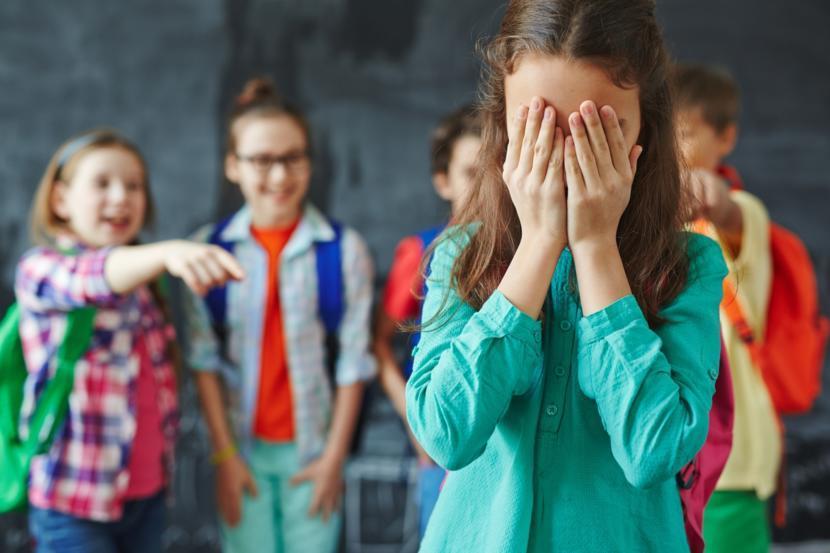How to Protect Children with Autism from Being Bullied

It is an unfortunate fact that children have a tendency to find weaknesses and differences in their peers and latch onto it, emotionally or physically hurting the other child in the process. When performed on purpose and repeatedly, this is bullying and is a serious problem. Bullying is violence, though it does not have to be physical. Any intent to harm another child is bullying.
Bullying and Autism
As a parent of a child with autism, your child is at high risk of being bullied. Children with disabilities are bullied twice as often as their peers, and children with autism bullied even more so. They often have difficulties with social skills, which can be interpreted by a potential bully as a weakness to be exploited. Communication difficulties are another avenue bullies attack, as are shyness, anxiety, sadness, emotional sensitivity, and a host of other qualities.
Not all bullying is overt abuse, such as calling someone fat. Because children with autism can have trouble reading social cues, they more easily fall for covert, manipulative bullying than other children. Examples include another child pretending to be their friend while leading them into humiliating situations, or asking leading questions to mock the victim.
While inclusive educational environments are typically positive for their development, some problems may arise. Some children with autism can feel like they have trouble fitting in with their peers, which invites bullying. Some of their peers may see them as abnormal and victimize them for it.
Effects of Bullying
It is important to remember that while children with autism can struggle to understand and express their emotions, they are still emotional beings and can be devastatingly hurt. Even if they do not outwardly appear so. This emotional pain can affect many aspects of your child’s life.
In the short term, the bullying can disrupt your child’s education, causing grades to suffer and interrupting their learning. Relationships with teachers and other students may break apart, and the child may become more difficult at home. Physical abuse can lead to injuries.
Long term, the damage can be more insidious. Your child’s ability to trust and form relationships may be permanently altered. Damage to their self-esteem can echo into adulthood. Problems with leaving the house can form or be exacerbated. Even worse, bullying can cause post-traumatic stress disorder or depression.
Signs of Bullying
Because of the harm caused by bullying, it is important to stay vigilant and observe your child for signs of victimization. Catching it early will help everyone involved. Keep an eye out for these signs:
- Increased anxiety
- Reluctance to attend school
- Minor injuries such as bruises
- Loss of appetite
- Stress eating
- Damage to personal items
- Difficulty sleeping
- Sudden change in routine
- Loss of focus
- Academic decline
- “Closing up,” not wanting to communicate
- Mentioning feeling helpless, vulnerable, or frustrated
- Distrust of fellow students
- Sickness, real or fake
- Change in body image, such as not wanting to swim in public
- Voluntary seclusion
- Causing trouble
- Finally, telling you they feel bullied
How to Handle Bullying: At Home
There are two main avenues you can use to address bullying. The first is to educate your child on the different forms of bullying and what to do when bullied. The other is to work with the school to help provide a safe space for your child and to monitor, prevent, and deal with bullying.
Educate your child about bullying. Explain what it is, and that it can take multiple forms, from physical abuse and damaging their property, to one-sided social situations at the expense of the victim, to subtle manipulations which lead to embarrassment.
Children with autism often have difficulty reading social cues, and need your help learning what is and is not a healthy relationship. Regularly talk with your child about their experiences with their peers, and use examples from your own life and history of people who pretended to be your friend but weren’t. Encourage your child to form relationships with honest, loving children, as a peer network helps protect against bullies.
Make sure that your child not only know what bullying looks like, but also what to do when bullied. It can be difficult to extract oneself from a bad social situation, but encourage your child to attempt to do so anyways. Let them know that teachers and other adults in the school are there to help them when they feel scared or overwhelmed. Encourage reporting of the bullying behavior; bullies tend to continue until stopped, so staying quiet will not help the victim.
Often, the victim of a bully will believe that they are at fault for being bullied. It is important to offer encouragement and explain to your child that the problem lays in the heart of the bully.
Basically, communicate with your child. Hear their voice and concerns, and pass on encouragement from your knowledge and experiences. Stay involved with their school and social life. Now we will discuss what you can do with the school to help handle bullying.
How to Handle Bullying: At School
Just as communication with your child is important, communication with the school is important as well. Talk with the administrators and teachers before your child begins at school to learn about the strategies they have enacted to help prevent bullying. Continue talking with the teachers throughout the school year to keep up-to-date on what’s happening in the classroom and to keep on top of any issues which may arise.
It is important that the adults at the school are educated about bullying. Sometimes even teachers need to learn that bullying can be more than just physical harassment. Teachers need to be alert to signs of bullying and take proactive steps to prevent such occurrences. They also need to make themselves available to your child as a safe person to talk to when the child feels bullied.
Bullying most often happens when the victim has no support around them. Work with the school to encourage hallway monitors and adult supervision during the transition between classes, during lunch, and when the children are out at recess.
It can help to educate all of the children on what bullying looks like and how to deal with it. This way every child knows what to do if they see bullying, rather than ignoring it. If your child is unable to extract himself or herself from a negative situation, this may lead to another child alerting an adult.
Sometimes mediation between bully and victim helps both children. Bring the two together in a safe place with a trusted mediator, and encourage positive communication between the two. This type of insight can help the bully realize that they are hurting someone who is just as valuable a person as they are, and there is even the possibility that after some counseling, the two children become friends.
In extreme situations, it may become necessary to change schools entirely. This can happen when the school administration refuses to help their students or the teachers have proven powerless to prevent bullying from occurring. Make sure that the next school holds themselves to a higher standard than the previous one. The best education in the world can mean nothing if your child is unable to learn due to being constantly victimized.
How Not to Handle Bullying
Just as there are positive ways to deal with bullying, there are also strategies which either do not help or are themselves destructive.
Counseling either the victim or the bully can help mitigate the effects of bullying, but typically does not end the abuse. Neither does encouraging your child to accept the bullying as a normal part of childhood.
Willful ignorance of the more subtle forms of bullying does nothing to help your child. Neither do zero tolerance policies. They sound good on the surface, but end up punishing the victim as well, especially if they try to defend themselves.
Occasional efforts to combat bullying, such as a school-wide lecture once a semester, do not work. The effort has to be ongoing.
Never, ever, blame the victim for the abuse. Your child is not at fault for being bullied, so avoid implying that they are. Doing so can compound the negative effects and scar your child’s psyche.
Conclusion
Bullying can be a serious problem which can lead to long-term damages to children. Children with autism are especially vulnerable to being bullied due to their differences with their peers and their difficulty with social and emotional skills. But by staying involved with your child’s life and working with the other adults in their life, you can help them deal with bullies and have a healthy, positive life.














